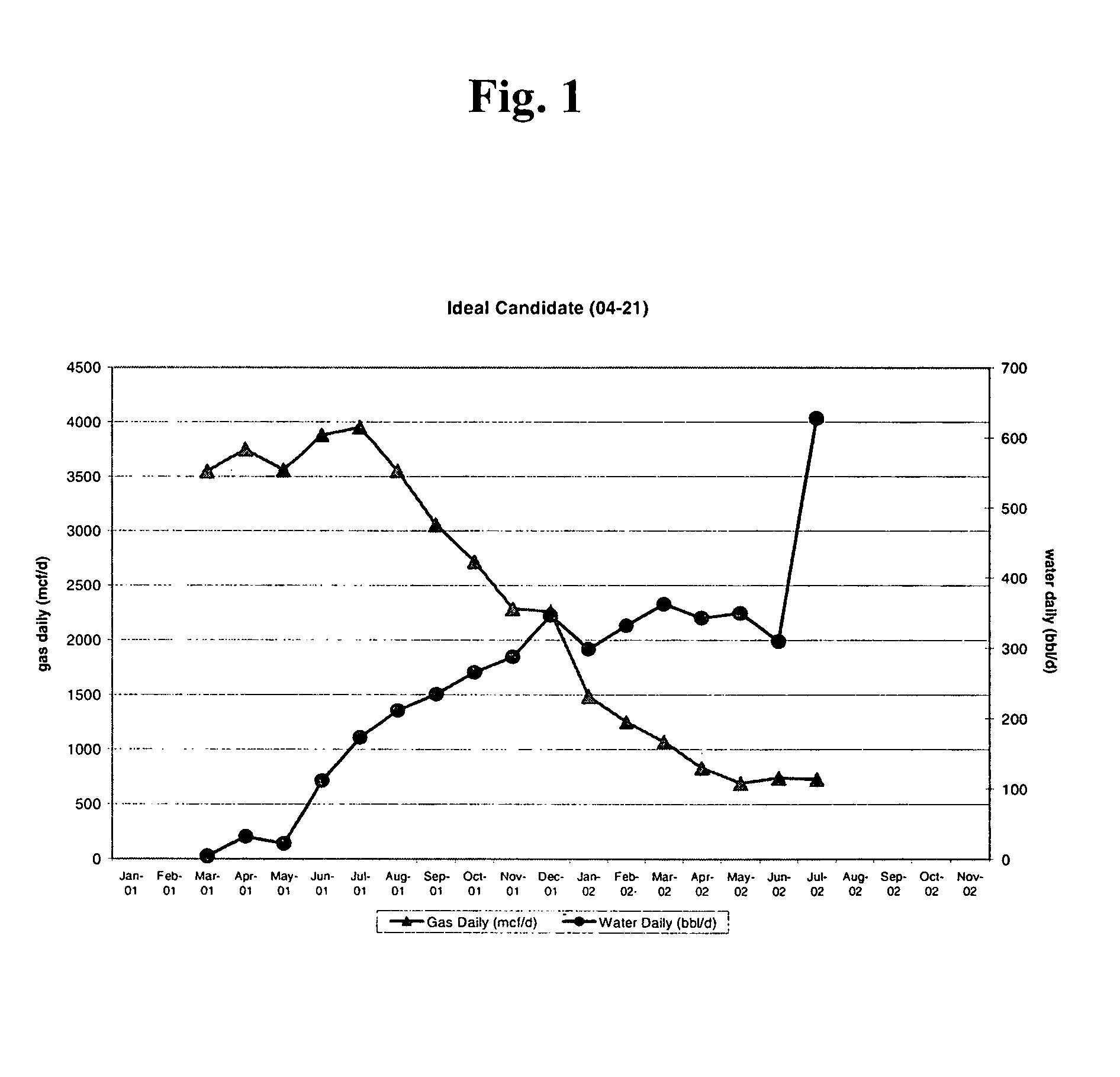Method for terminating or reducing water flow in a subterranean formation
a subterranean formation and water flow technology, applied in the direction of fluid removal, wellbore/well accessories, drilling compositions, etc., can solve the deleterious effects of water production, severe disruption or in fact termination of the desired operation of the well, and kill the gas flow in the well, so as to optimize the post-treatment production, reduce or shut off water production, and improve the effect of gas and oil permeability
- Summary
- Abstract
- Description
- Claims
- Application Information
AI Technical Summary
Benefits of technology
Problems solved by technology
Method used
Image
Examples
case 1
Shut Off-Gas (FIG. 3)
[0058]
Volume of Treatment2.04 m3Formation TypeSandstoneWork-over ReportPumped 2.1 m3 at a rate of 200 l / min withpumping pressure of 1,200 kPa to blockwater production from induced fractures.ResultAs soon as these tight sandstone wells arefractured to induce gas production, wateroverwhelms the well and it is unable toproduce gas or water. Following theDirexit treatment, the water productionrate was cut in half, and the well has beenon full time production since thetreatment.
[0059]The present invention provides a number of important advantages. By using phenoformaldehyde containing 1-2 weight % sodium bisulphite / sodium metabisulphite as an aqueous polymer, a barrier is formed which, once set or gelled, effectively blocks water flow from coning up into the production perforations of the well. Also, by controlling the differential pressure (ΔP) to inject the polymer, capillary forces in the oil, gas and water-bearing portions of the rock are overcome while maintaini...
PUM
 Login to View More
Login to View More Abstract
Description
Claims
Application Information
 Login to View More
Login to View More - R&D
- Intellectual Property
- Life Sciences
- Materials
- Tech Scout
- Unparalleled Data Quality
- Higher Quality Content
- 60% Fewer Hallucinations
Browse by: Latest US Patents, China's latest patents, Technical Efficacy Thesaurus, Application Domain, Technology Topic, Popular Technical Reports.
© 2025 PatSnap. All rights reserved.Legal|Privacy policy|Modern Slavery Act Transparency Statement|Sitemap|About US| Contact US: help@patsnap.com



